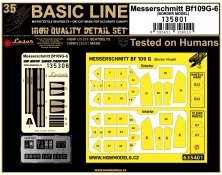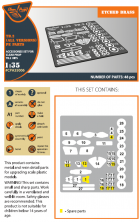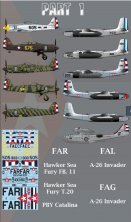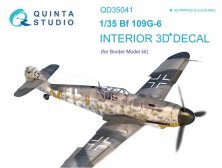
1/72 Uss Enterprise, 250N Blue Flight Deck Stain, November 1943
- Stato dello stock:Disponibile in 2-4 settimane
- Modello:KWB72503
- Marca:Kits-World
Descrizione
Kits-World - 1/72 Uss Enterprise (CV-6), 250N Blue Flight Deck Stain, November 1943. 675mm(W) x 450mm(H) 26 inches x 17 inches(H)
The Enterprise was one of three Yorktown-class carriers, the others being the Yorktown (CV-5) and Hornet (CV-8). She was laid down on July 16th 1934, and launched on October 3rd, 1936, and was the seventh ship to that date to be named Enterprise.
Nicknamed The Big E, the Enterprise was commissioned in May 1938 and began her initial shakedown cruise sailing to Brazil, and then back north where she patrolled along the eastern seaboard of the United States and the Caribbean, until she was sent for Pacific duty in 1939, and was based in San Diego. In 1941, she was used extensively in the Errol Flynn movie Dive Bomber (released in August of that year), and around this point was sent to Pearl Harbor. Prior to the December 7th attack on Pearl by the Imperial Japanese Navy, she sailed as part of Task Force 8 (TF 8) to Wake Island in order to deliver Grumman F4F-3 Wildcat's of VMF-211. At the time of the Pearl Harbor attack, the Enterprise was still at sea, her arrival home having been delayed by bad weather.
The United States had been alerted to the possibility of an attack at some point by Japanese naval forces so scouting and reconnaissance missions were carried out. Enterprise was involved in such missions and on the morning of December 7th aircraft from VB-6 and VS-6 carried out searches to locate and report any Japanese naval movements. As they were instructed to land at Ford Island near Pearl, they arrived during the attack, with some aircraft being shot down by Japanese aircraft or friendly fire. At the same time, Enterprise was alerted to the presence of a Japanese carrier to the southwest and launched a counterstrike consisting of Grumman F4F Wildcat's, Douglas Tbd Devastators and Sbd Dauntless's from VF-6, VT-6 and VB-6 respectively. The outcome of the mission was fruitless and the Devastator's and Dauntless's returned to the Enterprise. The Wildcat's were instructed to land at Wickham Field, Oahu and although US forces on the island had been alerted to their approach, adrenalin was still high and three of the fighters and crew were lost to ground fire with a fourth crashing due to exhausted fuel, the pilot managing to bale out.
Enterprise returned to Pearl on December 8th to refuel, restock and rearm and she left port the next day along with other ships from Task Force 8. The next day, aircraft of VS-6 from the Enterprise located and sank the Japanese Kaidai-class I-70 submarine in two separate attacks. Enterprise and other ships in Tf 8 were then tasked with defence of the HawaIIan Islands group until sailing for the Samoan Islands in January 1942.
The following month, Tf 8 was sent to the Marshall Islands where it took part in the Kwajalein, Maloelap and Wotje Atoll raids, with a number of Japanese ships, aircraft or facilities being destroyed or damaged. Enterprise then returned back to Pearl Harbor, and was assigned to Task Force 16 (TF 16) in March 1942.
In April 1942, Tf 16 departed Pearl to escort the Uss Hornet (CV-8) westwards to take part in the famous Doolittle (or Tokyo) Raid. Approximately 600 miles from Tokyo, aircraft from Enterprise provided air cover for the group. Hornet launched sixteen North American B-25B Mitchell medium bombers commanded by Lieutenant Colonel James H. Doolittle. Although the effects of the raid were negligible, with fifteen of the aircraft lost and the remaining B-25 interned in the Soviet Union after crashing north of Vladivostok, it at least gave the United States a needed morale boost and showed that the US was able to strike back at the Japanese mainland.
In May 1942, she was sent to provide reinforcement to US ships for the Battle of the Coral Sea. Along with the Hornet, she provided diversionary manoeuvres to disrupt Japanese efforts to take the islands. She again returned to Pearl later in that month, and she put out to sea again two days later, en route to the Midway Islands.
The Battle of Midway in June 1942 was to be the Enterprise's next major engagement. On the 4th, dive bombers from Enterprise attacked and badly damaged the Japanese carriers Akagi and Kaga and later the Soryu was attacked and destroyed. Aircraft from the Japanese carrier Hiryu launched a counter-attack against the Enterprise although she was undamaged. In return, aircraft from the Enterprise and Yorktown attacked and sank the Hiryu. On June 5th, aircraft from the Enterprise sank the Japanese cruiser Mikuma.
Enterprise returned to Pearl on June 13th 1942. The Battle of Midway proved to be a disaster for Japan, with four of her carriers lost, it marked the beginning of Japan's ultimate defeat in the Pacific.
In mid-July 1942, after a period of rest and refurbishment, Enterprise set sail for the Solomon Islands to link up with Task Force 61 (TF 61) in order to provide support for the Solomon Islands landings. It was here that she became engaged in the Battle of the Eastern Solomons when a Japanese naval strike force was detected north of Guadalcanal. Enterprise was badly damaged during this engagement suffering three direct hits from Japanese bombs and with 169 of her crew killed or wounded. Her remaining crew managed to return her to Pearl for repair.
Repairs in HawaII took a little over a month and in early October 1942 she set sail for the South Pacific once more, this time carrying the newly assigned VF-10 Grim Reapers flying F4F Wildcat's. From the 25th to 27th October, aircraft from the Enterprise were involved in the Battle of the Santa Cruz Islands, and the carrier was again badly damaged. Despite this, she carried on fighting. The Uss Hornet was sunk on October 27th and during the battle, remaining aircraft from that ship were able to land aboard the Enterprise. The loss of the Hornet left the Enterprise as the only remaining US carrier in the Pacific theatre of operations at that time. She managed to reach New Caledonia in late October where repairs were carried out but had to set sail early again for the Solomon Islands to meet a new Japanese offensive and still undergoing repair whilst en route! Following the cessation of the offensive naval operation phase of the Battle of Guadalcanal, Enterprise went back to New Caledonia where her repairs were properly completed. Following this she went to the New Hebrides before leaving for the Solomon Islands, where she took part in the Battle of Rennell Island on January 30th, 1943 when she provided air cover.
For the next few months, she provided air cover to US forces in the Solomon Islands area and in May 1943 was awarded the first ever US Presidential Unit citation made to an aircraft carrier.
Undergoing major overhaul and improvement beginning in July 1943, she was retired from duty and in November, was again sent into action during the Battle of Makin.
This base depicts her after her 1943 refit where she received blue deck stain and large deck numbers. So it is at this point where this brief history of CV-6 must close, but it is not the end. She went on to serve gallantly throughout the remainder of the war before being decommissioned in 1947 and eventually scrapped in 1960.
Main aircraft operated for the period (November 1943) given:
Grumman TBF-1 Avenger. Aircraft shown is a TBF-1 of VT-10.
Douglas Sbd Dauntless
Grumman F4F Wildcat
Grumman F6F Hellcat
Acquisti Correlati
I clienti che hanno questo preso quest prodotto lo hanno anche comprato?????










